
AIthough Earth is our familiar home, it is also a weird and wonderful place. And the more we learn about the bizarre creatures we share it with, the weirder and more wondrous it becomes.
Are there really spiders who cook their own supper? Marine animals with exploding backsides? Caterpillars disguised as poo, or beetles that look like mini JCBS? Amazingly, the answer is yes.
Long and short of it
Let's start with those beetles. They are called giraffe weevils and live only in Madagascar (where, by the way, many of the local animals, including lemurs, have evolved to look unlike anything else on the planet). Scientists know of more than 400,000 species of beetle so far a staggering number, yet none of the others have necks quite like these red and black beauties. In male giraffe weevils, their jointed necks stretch so far that their tiny heads are four times taller than the rest of their bodies. You can see how they got their name, but what are those magnificent necks for? The answer is fighting. Rival male weevils neck-wrestle to impress females and win the chance to mate. By a curious coincidence, actual giraffes do the same thing! What about female weevils? Their necks are far shorter and they use them for rolling leaves to make their nests.
Other animals use their body parts to help them adapt to their environment. Russia's saiga antelope has a nose so huge and droopy, it is almost a trunk. It looks a bit odd, but is ideal for life in dusty plains, since it filters dirt from the air. The antelope's massive hooter also heats up incoming air when it is cold, and helps cool air when it is hot, ensuring that the animal is always comfortable.
One of a kind
In every habitat, there are animals with adaptations that at first seem peculiar, but which actually make complete sense.
هذه القصة مأخوذة من طبعة Issue 67 من The Week Junior Science+Nature UK.
ابدأ النسخة التجريبية المجانية من Magzter GOLD لمدة 7 أيام للوصول إلى آلاف القصص المتميزة المنسقة وأكثر من 9,000 مجلة وصحيفة.
بالفعل مشترك ? تسجيل الدخول
هذه القصة مأخوذة من طبعة Issue 67 من The Week Junior Science+Nature UK.
ابدأ النسخة التجريبية المجانية من Magzter GOLD لمدة 7 أيام للوصول إلى آلاف القصص المتميزة المنسقة وأكثر من 9,000 مجلة وصحيفة.
بالفعل مشترك? تسجيل الدخول

Are cats smarter than dogs?
They're the UK's top pets, but which is more intelligent? You decide!
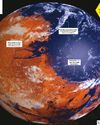
Could people turn Mars into another Earth?
Sven Bilén explores how humans might make a home on another world.
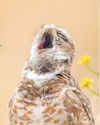
FUNNY BY NATURE
Claire Karwowski tracks down the wackiest wildlife that's cracking up the animal kingdom.
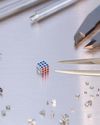
WEIRD SCIENCE
A round-up of the strangest science stories from around the world.

Guardians of the forest
Meet the incredible people protecting the Amazon rainforest.
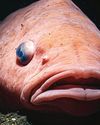
The Mariana Trench
Dive in to find out how far down the ocean goes and what it's really like at the bottom.

Megan McCubbin
Meet the zoologist trying to change people's views of animals with a bad rep.

MAX POWER
From the second you wake up in the morning, your way of life is made possible thanks to the amazing power of electricity.

Your heart has a "brain"
New research by scientists at Sweden, and Columbia University, in the US, suggests that your heart could have its own \"mini brain\".
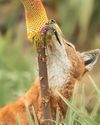
Ethiopian wolves could be furry pollinators
Sweet-toothed Ethiopian wolves have been seen lapping up nectar have been seen happing up nectar from red hot poker flowers.